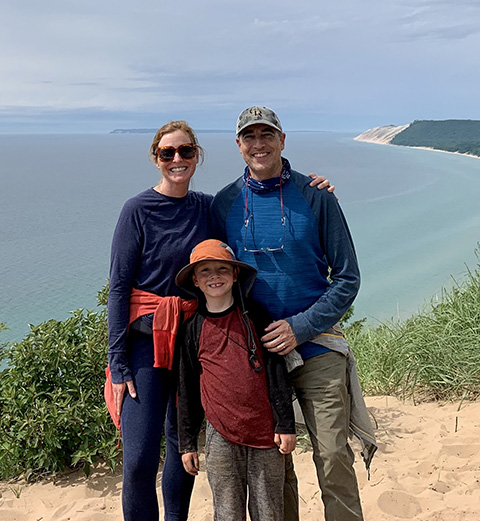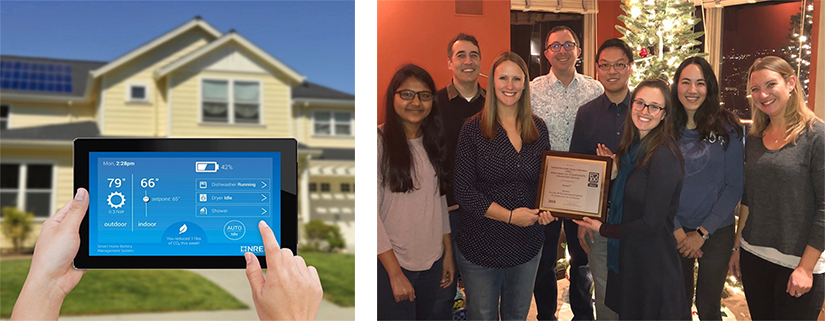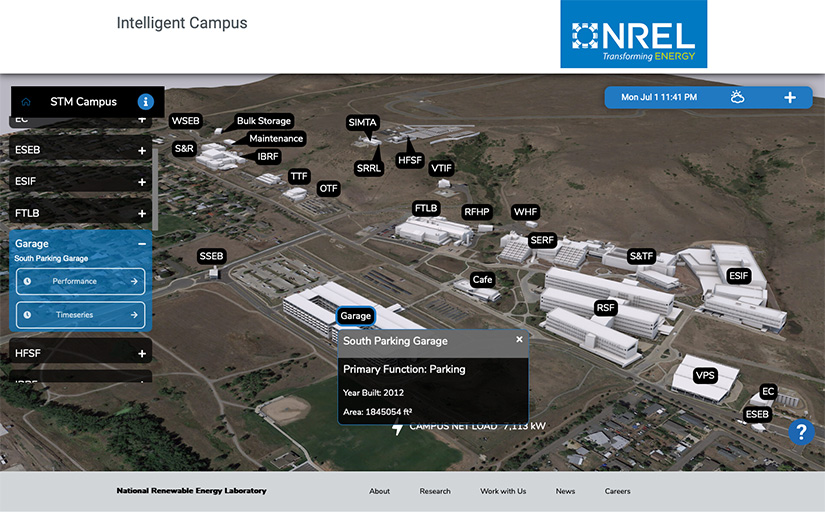Creative Services Group Manager Puts Humans Into Science
Bill Gillies Recognized in Inaugural NREL Distinguished Members of Operations Staff Class
Graphic design was very different when Bill Gillies started working at the National Renewable Energy Laboratory (NREL) in 2000. There were no smartphones or tablets, no emojis or animated GIFs. Photoshop was relatively new, and people still consumed most of their information the old-fashioned way: on paper. NREL.gov, which had launched only a few years earlier, was mainly a list of programs and technologies with a photo of the newly constructed Solar Energy Research Facility.

Today, however, the NREL website greets visitors with large, evocative images of people installing solar panels at the South Pole, people running materials through spectrometers, and people repelling from wind turbines. In other words, people.
Gillies was a large part of that transition.
“We've evolved the brand to speak to how we humanize what we're doing here,” Gillies said. “It's not just about making things spin faster. It's about, how do these technologies affect people and communities?”
In his 24 years at NREL, Gillies has steadily pushed for a more human-centered approach to communicate NREL's brand and, this year, was recognized as one of 13 Distinguished Members of Operations Staff.
“He championed people as the heart of our strategy and brand—people working together to achieve a clean energy future for our world,” said Stacy Buchanan, design manager at NREL who has worked with Gillies for 15 years.
That means creating a design system that communicates science in simple, clear terms, highlights issues that are important and timely to people, and uses photography that focuses on people rather than abstractions or ornamental design elements.
For Gillies, the human-centered approach is more than a brand. It's how he sees the world.
“Even if I tried to be a scientist or researcher, I don't have that kind of brain," Gillies said. "I'm more interested in human values than in making something faster or smaller or more efficient. When we have these great technology breakthroughs, I'm thinking, ‘How does that affect people?'”

In recent years, he has loved seeing this mindset trickle down to NREL's research and development.
“We used to develop technologies and put them in these environments,” Gillies said. “Now we do so much community engagement beforehand, looking at people's wants and needs, thinking about how technologies are implemented and experienced.
Over the years, Gillies has moved from a graphic designer to lead designer to design manager. Then, two years ago, he became the group manager of Creative Services, which includes the design, multimedia, web, and writing teams—a total of 46 people.
“He's made great strides in changing the way people view design," Buchanan said. "Instead of just making things look pretty, our designers get involved at the beginning of a project working alongside researchers to help solve problems."
In fact, it was just such an experience that inspired Gillies to move up in the design world. In 2013, he got the chance to work with researchers on a laboratory directed research and development-funded project called “Humans in the Loop.”
At a time when Google Nest and other smart home products were coming out, NREL wanted to get a better understanding of how their technologies were being used by people. In the energy space, for example, how could technologies be adapted to meet human needs—and how could they expect human behavior, in turn, to adapt to technology?
As part of this project, they created a “Comfort Suite” inside the Thermal Test Facility on NREL's South Table Mountain Campus: basically, a studio fully equipped with heating, cooling, and a very fancy chair in front of a large screen.
“We would have voluntary subjects go in there and see how they would react to the temperature based on the virtual environment,” said Doug Arent, executive director of Strategic Public-Private Partnerships, who was head of the Joint Institute for Strategic Energy Analysis (JISEA) at the time. "If there was polar imagery playing on the screen, for example, they felt comfortable at a warmer temperature than if it was an oceanic landscape."

These kinds of insights were critical to heating and cooling system design because they showed human comfort was not just about the temperature. You could take advantage of other methods, such as visual imagery, to save energy, too. Using information gleaned from this and other experiments, the team created all-new methods for collecting data and integrating human-centered design into survey questions and other forms of research.
“Bill was integral in pulling it together and helping us capture and codify the core elements,” Arent said. “Thanks to his great listening skills and synthesis skills, he was able to translate the technical into the visual in a way that was absolutely critical for a project like this.”
It altered Gillies' career path, too, motivating him to go back to school and get a master's degree in organizational leadership and strategic innovation so he could design not just things within existing systems but the systems themselves. Essentially, design systems that foster engagement to advance meaning, purpose, understanding, and human values.
“Getting to immerse myself in the research space was probably the biggest transformative thing in my career at NREL,” Gillies said.
Today, as the group manager of Creative Services, Gillies is working to redesign the group to meet the laboratory's ever-changing needs while keeping a focus on—of course—humans.
His biggest piece of advice for early-career employees, especially in the design or communications world?
“Don't think in traditional modes," he said. "Experiment. Put the A in STEM—we really need to advocate for the arts. If we want our research to connect with people, we need to understand their value systems."
This article has been updated to reflect an editorial change made after its original publication.
Last Updated May 28, 2025
